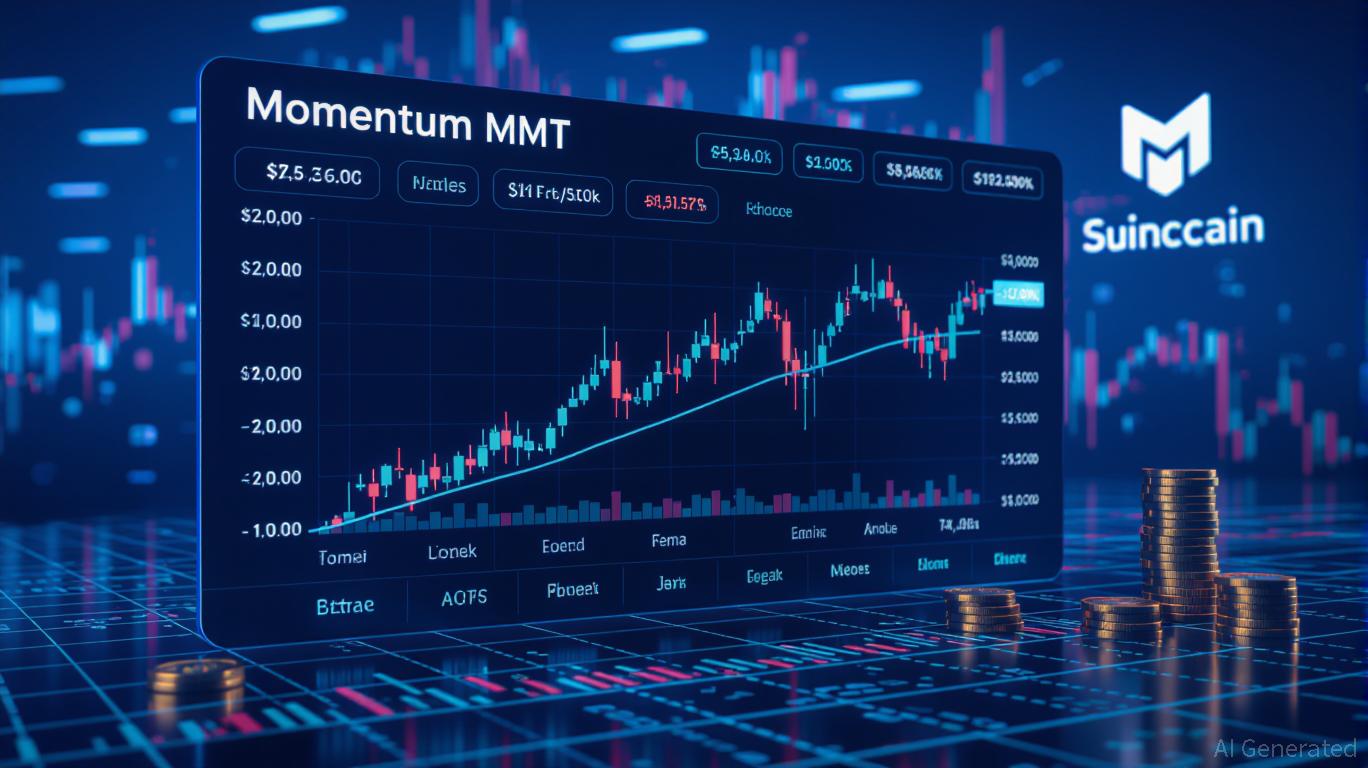TWT's Updated Tokenomics: The Impact of Trust Premium on Investor Confidence and Ecosystem Expansion
- Trust Wallet launched Trust Premium in 2025, transforming TWT from a governance token to a tiered rewards system tied to user engagement. - The program accelerates TWT value through gas discounts, exclusive airdrops, and early feature access, creating a flywheel effect for ecosystem growth. - While lacking explicit APY adjustments, Trust Premium prioritizes utility-driven incentives over yield, attracting stability-focused investors amid volatile crypto markets. - By aligning tokenomics with user behavio
In November 2025, Trust Wallet introduced Trust Premium, a loyalty initiative that transforms the role of its native token,
A New Framework for TWT: From Governance to Engagement
Trust Premium is structured around Bronze → Silver → Gold levels, where participants accumulate Trust XPs by engaging in activities such as swapping, staking, and asset holding. Notably,
The Coinedition report highlights that the program’s structure is reminiscent of loyalty schemes in traditional finance, where premium clients receive layered benefits. By linking TWT’s usefulness to user actions, Trust Wallet creates a self-reinforcing cycle: greater demand for TWT among active users boosts its value, which then attracts even more users to the platform.

Staking Rewards: Indirect Incentives Over APY Adjustments
Although the available information does
For comparison, the
Investor Sentiment: A Balancing Act
The rollout of Trust Premium has generated a range of responses from investors. On the positive side, the program’s emphasis on user participation supports sustainable value growth and may help reduce price swings compared to more speculative staking systems. Conversely, the absence of clear APY changes for TWT staking could discourage those seeking high yields, especially when compared to tokens like
Data from Bit Digital Inc. indicates that Ethereum staking yields averaged 2.93% in October 2025, according to a
Ecosystem Growth: A Win-Win for Users and Developers
The effectiveness of Trust Premium depends on its capacity to boost user participation while also benefiting developers. By granting early access to innovations like Trust Alpha, the program encourages active users to become informal advocates for the platform, as noted in the Coinedition report. This approach mirrors larger trends in decentralized finance (DeFi), where community involvement and user-generated content are key drivers of growth.
Additionally, the program’s focus on encouraging TWT accumulation helps decrease selling pressure and may contribute to price stability. This is especially important in a landscape where tokens such as ZKSync and Ethereum contend with issues like high inflation and regulatory risks, as mentioned in the Lookonchain feed.
Conclusion: A Strategic Pivot for TWT
Trust Wallet’s 2025 revamp of its tokenomics signals a deliberate move away from speculative staking toward value creation driven by engagement. While the lack of explicit APY updates may not satisfy those chasing high yields, the Trust Premium system lays out a robust path for sustainable ecosystem development. By linking TWT’s utility to user actions, Trust Wallet not only increases demand for the token but also cultivates a dedicated user community—an essential edge in the competitive crypto space.
As the sector matures, platforms that emphasize real-world utility over short-term gains—such as Trust Wallet—are likely to outperform those focused solely on immediate incentives. For investors, the main message is this: TWT’s prospects depend on its adaptability to user needs, rather than just market trends.
Disclaimer: The content of this article solely reflects the author's opinion and does not represent the platform in any capacity. This article is not intended to serve as a reference for making investment decisions.
You may also like
Defying Market Swings: $NNZ's Tactical Approach to Crypto
- Bitget report highlights Noomez's $NNZ token as a 2025 bull run contender with 280x price potential via its 28-stage presale model. - Deflationary mechanics include token burns at key milestones, 15% locked liquidity, and double staking rewards for early adopters. - Community-driven features like "Noom Recruit" referral program and transparent Noom Gauge dashboard aim to build trust and adoption. - Analysts note $NNZ's structured approach addresses meme coin volatility while aligning with 2025 trends fav

Growing Institutional Focus on Momentum (MMT)
- Momentum (MMT) token surged 1330% post-Binance listing, driven by $10M funding and institutional backing from Coinbase , OKX, and Jump Crypto. - On-chain data shows $12B 30-day DEX volume and $265M TVL, but analysts warn of speculative risks amid 224% 24-hour volatility spikes. - Institutional capital shifts toward Bitcoin/ETH staking ($6.1B combined inflows) raise questions about MMT's long-term viability without proven real-world utility. - Upcoming ve(3,3) DEX and RWA integrations aim to enhance MMT's

AAVE -3.37% 7-Day Surge Despite Year-Long Downtrend as Market Integrates
- Aave's AAVE token fell 0.89% in 24 hours to $207.68 despite a 3.37% 7-day rally amid strategic integrations. - Aave Horizon's partnership with VanEck's VBILL tokenized Treasury fund enables institutional-grade collateral via Chainlink and Securitize infrastructure. - The integration creates arbitrage opportunities with 4.84%+ potential returns through VBILL collateralized RLUSD borrowing strategies. - Backtests show Aave outperformed BTC by +14.54% over 30 days post-announcement, with 67% positive excess
Kyo Achieves $1 Billion Valuation: Wagering on Cross-Chain DeFi Integration During Industry Upheaval
- Kyo Finance secures $5M Series A at $1B valuation, aiming to unify blockchain liquidity via cross-chain interoperability. - DeFi faces innovation vs. security tensions as projects like Mutuum advance infrastructure while crises like Stream Finance's $93M loss expose systemic risks. - Industry responds with risk mitigation tools (e.g., RedStone ratings) and modular infrastructure reforms to address contagion risks from interconnected lending markets. - Kyo's valuation reflects institutional confidence in